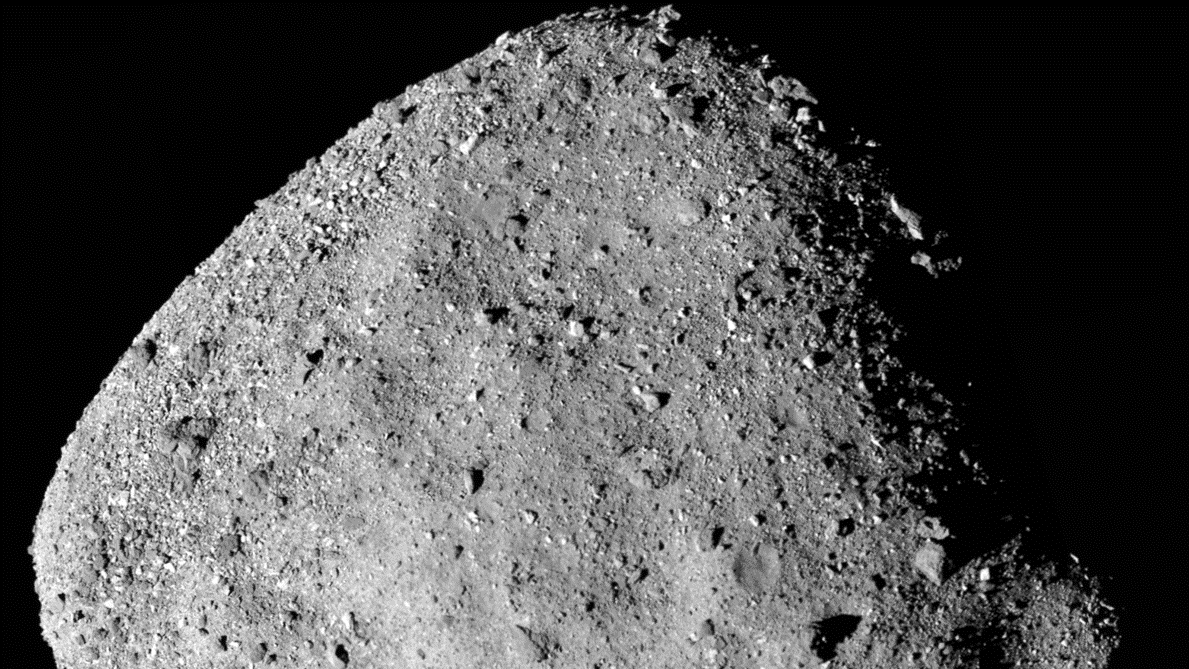This very evening, as the sky turns dusk-ish along the eastern seaboard, a spunky little NASA robot named OSIRIS-REx will attempt to land on a carbonaceous near-Earth asteroid named 101955 Bennu. If the robot—which I have started calling "O-Rex" because it is now my closest pal and I would kill for it—successfully lands, it will extend a robot arm with a little cup at the end, and it will attempt to hoover up some dirt from the surface of this asteroid. And if it successfully obtains asteroid soil, it will fire up its little boosters and lift off from the surface of the asteroid. And where will it be headed, you ask, in a tone that suggests you are not taking this as seriously as you should be? It will be headed home! It will be returning to Earth, with a little pile of space dirt cupped securely inside of it, like a nice little souvenir gift for its human pals.
So help me God, if you are watching baseball or Emily In Paris or reruns of Californication while my pal O-Rex navigates this incredible, historic feat—landing on a rotating, particle-spewing rock two hundred million miles from Earth, after long years of space travel, reaching down with its robo-hand, collecting matter that dates to "the earliest stages of solar system formation," and then turning around and launching itself back to us like a damn golden retriever—I will quite simply never forgive you. Frankly, it is appalling that the various television honchos have dared to counterprogram this mind-boggling event. It should be against the law to watch anything else.
You can keep up with O-Rex's progress by following our intrepid robot hero at its website and on Twitter, where it is tweeting updates as its big moment approaches. Here is an insanely cool video of O-Rex practicing the approach maneuver, way back in April:
This is not a small deal. In NASA's illustrious history, it has never returned samples from an asteroid. For various science reasons, it is probably very cool to have a packet of dirt from way out in outer space. The search for alloys and what-not, fascinating things having to do with the history of our universe. It is probably worth remembering, at this moment, that the plot of Night of the Living Dead involves a space probe returning to earth with mysterious space radiation that turns the dead into flesh-eating zombies. This and other possible outcomes are beyond the purview of our pal O-Rex! Whatever disappointments or horrors of the perfectly indifferent void travel inside O-Rex's cup must not be held against him! He was given a big and terrifying job: to venture way out into the cold black expanse of the universe, an unfathomable distance, and bring back a fistful of dirt. He didn't pick the job; he didn't pick the asteroid; he didn't pick the landing spot; he didn't pick the objective. He is doing just as he is told, like a good robot.
Here are some cool facts about Bennu, the asteroid:
- It is considered a "potentially hazardous object" by the Sentry Risk Table, which is a fancy impact prediction system that tells us how quickly we will need to train a ragtag platoon of oil riggers for space flight, in order to avert a cataclysmic event.
- It will make its most threatening pass of Earth sometime between 2175 and 2199, so you will be long dead and do not need to worry at all about what could happen.
- Its mean diameter is around 1,600 feet, and it is spheroidal, and it is only slightly denser than water.
- It was formed in the breakup of a planetoid or proto-planet, and it has been around for 4.5 billion years or so.
O-Rex will be landing on a spot that scientists have named Nightingale, which was one of four potential targets they'd picked out on Bennu's surface. Nightingale was the primary choice, as it is considered the likeliest deposit of "fine-grained material," and appeared to be the most easily accessible, as it is situated at the base of a crater approximately 460 feet in diameter. As I sit here typing this blog, O-Rex is comparing images of the surface of Bennu in order to line up its final approach for landing. Right now! I urge you to walk outside and look up in the sky and wrestle with the knowledge that way the hell up there there is a robot from Earth preparing to land on an actual asteroid!
If O-Rex completes this incredible mission, it will be a long three-year flight before it returns to its home planet and unleashes whatever nightmare space sickness reduces humanity to a slick pink ooze. Before I am metabolized by this hell-cloud, I demand that O-Rex be allowed to live with me in bucolic serenity for the remainder of its days.






